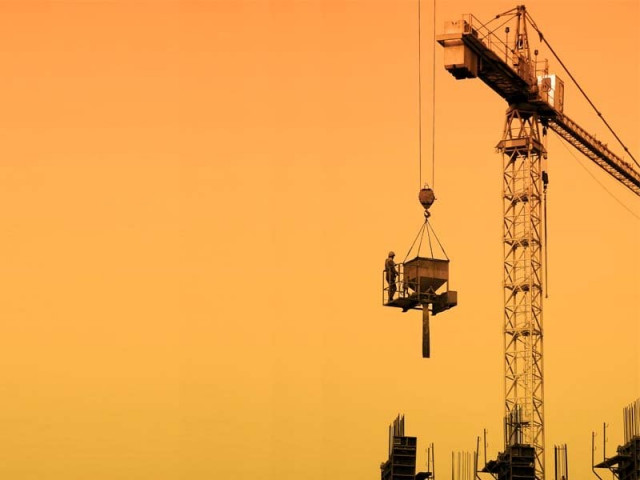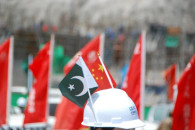No new mega projects in next year's PSDP
Planning ministry wants to spend over Rs1 trillion under PSDP every year for next five years

PHOTO: CREATIVE COMMON
The development spending allocation in the current range of Rs675 billion in the new budget would not be in line with the projected federal development spending in the proposed 12th five-year plan (2018-23). The MoP wants to spend over Rs1 trillion under the PSDP every year for next five years to achieve its targets.
While giving a briefing to the National Assembly’s Standing Committee on Planning and Development, Planning Secretary Zafar Hasan also ruled out the possibility of restoring the projects in the next fiscal year that had been slashed by the Pakistan Tehreek-e-Insaf (PTI) government to cut the overall size of the PSDP.
The ministry also gave a briefing to the standing committee on the proposed 12th five-year economic plan. The ministry's Joint Chief Economist for Macroeconomic Section Rai Nasir Ali made a claim that the provinces were also bound to follow the 12th five-year plan – an assertion that is contrary to the ground realities.
While responding to a question, the planning secretary said that the Ministry of Finance has not yet officially shared the size of the PSDP for fiscal year 2019-20. But it appears from discussions that the size would remain at almost this year's level.
For the ongoing fiscal year, the PTI government had slashed the PSDP size to Rs675 billion to cut the budget deficit.
The government is negotiating a bailout package with the International Monetary Fund (IMF) that is demanding that Pakistan contain its ballooning budget deficit.
In terms of size of economy for the next fiscal year, the finance ministry has retained the PSDP allocation at 3.5 per cent of GDP, which is also the allocation for this year, according to Pakistan's Path of Stabilisation and Sustainable Growth that the government shared with the IMF a few months ago. In absolute terms, the PSDP has been projected at Rs700 billion in the document.
The government needs to allocate at least Rs1 trillion just to complete the ongoing projects in time.
In a new draft of the 12th five-year plan, the government has shown Rs5.2 trillion total spending under the federal PSDP in five years. Total development spending by the four provinces and the federal government has been shown at Rs11.75 trillion.
These proposed targets do not go with macroeconomic projections under the IMF programme.
PTI lawmaker Malik Nawab Sher Waseer raised the issue of slashing the PSDP projects that had been approved by the Pakistan Muslim League-Nawaz (PML-N) government. The secretary said that these projects cannot be restored until the line ministries recommend allocations for them in the new budget.
Joint Chief Economist for Operations Dr Ali Bat said that the priority areas of spending in the next fiscal year will remain the China-Pakistan Economic Corridor (CPEC) projects and the security-related development spending.
Malik Nawab Sher also proposed to include the chairman of the standing committee in the National Economic Council (NEC) – the country's highest constitutional economic decision-making body. Prime Minister Imran Khan has made Finance Minister Asad Umar, Planning Minister Khusro Bakhtiar, Commerce Adviser Abdul Razak Dawood and Institutional Reforms Adviser Dr Ishrat Husain as federal members of the NEC.
The four provincial chief ministers are also members of the NEC that takes decisions on the country's macroeconomic policies.
Economic growth
"Housing and jobs creation is linked with the economic growth," said Rai Nasir while making a case for a sustainable economic growth rate. But the projections that he showed as part of the 12th five-year plan suggest that the government would not be able to create conducive environment that will help generate 10 million jobs and build five million housing units.
The planning ministry has projected only 4pc economic growth rate for current fiscal year, which it showed slightly picking to 4.6pc in 2019-20. The economic growth for the third year of the PTI government is projected at 5.5 per cent, for the fourth year at 6.2pc and for the last year of the tenure, fiscal year 2022-23, has been shown at 6.7pc.
Even these targets may not be achievable if Pakistan enters into an IMF arrangement.
The five-year average growth in the agriculture sector has now been lowered to 3.3pc and the industrial sector growth has been put at 5.8pc. The services sector has been projected to grow at 5.9pc.
Nawab Sher said it seemed as if the planning ministry had made these plans while sitting in an air-conditioned room.
Committee Chairman Junaid Akbar raised the issue of linkages between federal and provincial planning.
Joint Chief Economist Rai Nasir claimed that all the four provinces will be bound to follow the five-year plan once approved by the NEC.
"Provincial autonomy does not mean that the provinces are not part of the federation," said Nasir.

















COMMENTS
Comments are moderated and generally will be posted if they are on-topic and not abusive.
For more information, please see our Comments FAQ